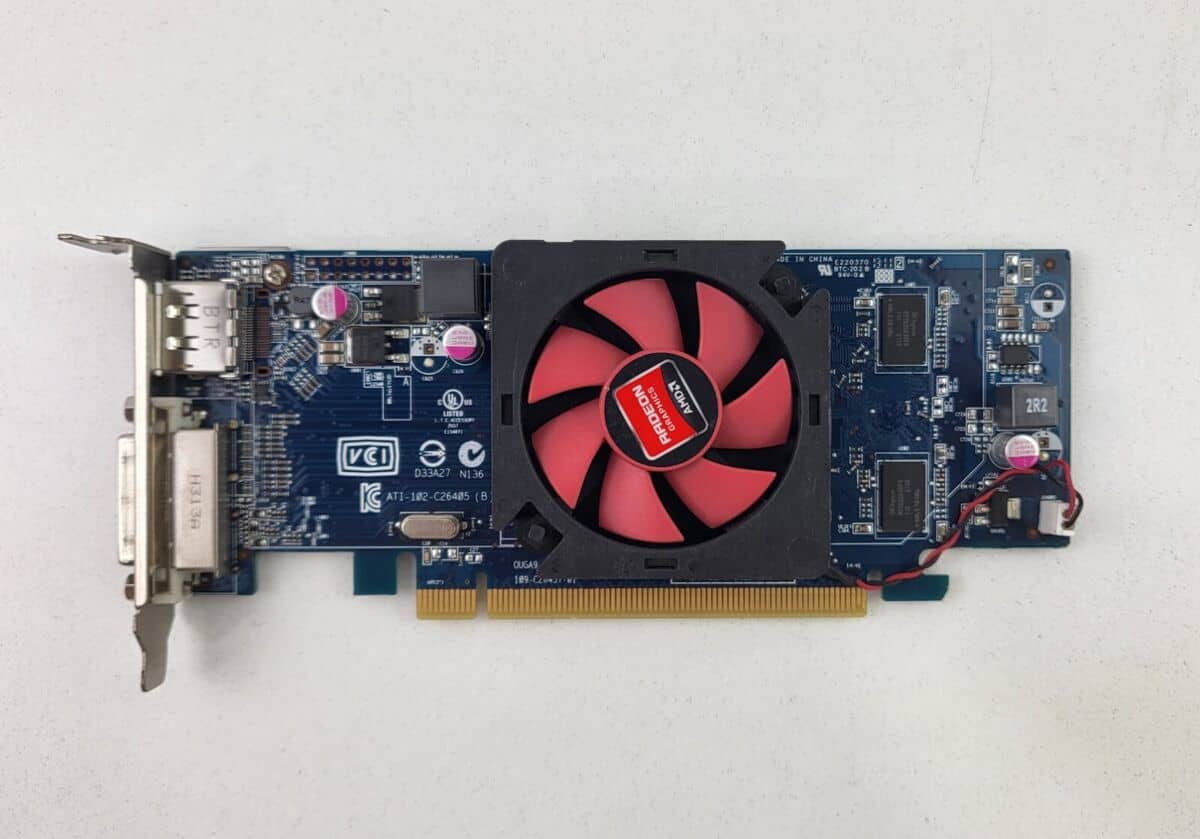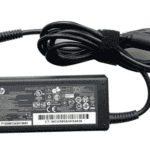The AMD Radeon C264 is a series of OEM graphics cards designed for use in pre-built computer systems by various manufacturers. Part of the Radeon HD 7000 series, the C264 label is commonly associated with entry-level cards such as the Radeon HD 7450 and HD 7470. These GPUs are mainly used in corporate and casual computing environments or for light multimedia tasks. They were launched in the early 2010s and operate on the 40 nm process technology.
These Radeon graphics cards typically support DirectX 11.2, along with features like OpenGL 4.4 and OpenCL 1.2. However, the lack of Vulkan support limits their compatibility with newer gaming applications and some modern graphical tasks. Despite this limitation, the Radeon HD 7470 and HD 7450, often associated with the C264 coding, serve basic display needs, with support for dual monitors and reliable visual output for everyday office and web applications.
AMD Radeon C264: Cloud Gaming Graphics
The AMD Radeon C264 isn’t your typical graphics card. It’s not designed to power your gaming PC at home. Instead, it’s a specialized graphics solution built for the demanding world of cloud gaming. Let’s explore what makes the Radeon C264 unique and how it contributes to delivering a high-quality gaming experience from the cloud.
Optimized for the Cloud: A Different Kind of GPU
Unlike consumer graphics cards that focus on rendering visuals for a single user, the Radeon C264 is engineered to handle multiple gaming streams simultaneously. It’s designed to maximize performance per watt and per dollar in a data center environment. This means it excels at efficiently processing and encoding video streams for multiple users, ensuring smooth gameplay and minimal latency.
Key Features and Specifications
The Radeon C264 leverages AMD’s Graphics Core Next (GCN) architecture, specifically the 4th generation. It boasts features tailored for cloud gaming, such as:
- Hardware-accelerated video encoding: Efficiently compresses video streams for transmission over the internet.
- Dedicated video decoding engines: Handles incoming video streams from users’ input devices with minimal latency.
- Support for multiple virtual machines: Allows a single C264 card to power numerous virtualized gaming instances.
While detailed specifications can vary depending on the specific configuration, the Radeon C264 generally offers:
- Memory: 8GB or 16GB of HBM2 memory for high-bandwidth data access.
- Compute Units: A substantial number of compute units to handle the parallel processing demands of cloud gaming.
- Thermal Design Power (TDP): Optimized for power efficiency in data centers.
Benefits for Cloud Gaming
The Radeon C264 brings several advantages to the cloud gaming experience:
- High-quality streaming: Enables smooth gameplay with minimal latency and high visual fidelity.
- Increased capacity: Allows cloud gaming providers to support more users with fewer physical servers.
- Cost-effectiveness: Its efficient design helps reduce operating costs for cloud gaming providers.
The Future of Cloud Gaming with AMD
The Radeon C264 represents AMD’s commitment to advancing cloud gaming technology. As cloud gaming continues to evolve, we can expect further innovations from AMD in the realm of specialized graphics solutions for data centers. This will lead to even better streaming quality, lower latency, and broader access to cloud gaming for players worldwide.
AMD Radeon C264: Key Features at a Glance
| Feature | Description |
|---|---|
| Architecture | AMD Graphics Core Next (GCN) 4th Generation |
| Memory | 8GB or 16GB HBM2 |
| Video Encoding | Hardware-accelerated |
| Video Decoding | Dedicated engines |
| Virtualization | Support for multiple virtual machines |
| Optimization | Designed for cloud gaming data centers |
Key Takeaways
- The Radeon C264 is related to entry-level OEM AMD graphics cards.
- Supports DirectX 11.2, OpenGL 4.4, and OpenCL 1.2, lacking Vulkan compatibility.
- Suitable for dual-monitor setups and basic computing tasks.
Technical Specifications
AMD Radeon C264
| Feature | Description |
|---|---|
| Type | OEM Graphics Card |
| Series | Radeon HD 7000 (entry-level) |
| Possible Models | Radeon HD 7450, Radeon HD 7470 (based on listings) |
| Launch | Early 2010s |
| Process Technology | 40nm |
| Memory | 1GB DDR3 |
| Memory Bus | 64-bit |
| Suitability | Basic computing, video playback, light multimedia tasks |
This section breaks down the key features and performance elements of the AMD Radeon C264 graphics card.
GPU Architecture and Processing Power
The AMD Radeon C264 graphic card’s central processing unit is built on the Caicos GPU architecture. Caicos is part of the Terascale 2 generation, manufactured by a foundry with a 40 nm process technology. This small yet efficient design showcases a die area of 67 mm² containing 370 million transistors, which provides a delicate balance between processing power and power consumption. The GPU variant noted for this model is Khalidster, featuring a configuration that supports an array of graphical functions vital for everyday computing tasks.
- GPU Name: Caicos
- GPU Variant: Khalidster
- Architecture: Terascale 2
- Foundry: 40 nm
- Transistors: 370 million
- Die Size: 67mm²
- Chip Package: BGA
Memory and Performance
The AMD Radeon C264 is equipped with 1GB of DDR3 memory, connected using a 64-bit memory bus, which is an arrangement suitable for entry-level graphics tasks. The graphics processor, complemented with this memory configuration, pivots the card towards basic performance levels, accommodating non-intensive graphical needs.
- Memory Size: 1GB
- Memory Type: DDR3
- Memory Bus: 64-bit
- Bandwidth: Subject to specific card model
With these specifications, the C264 caters to everyday computing requirements, handling tasks such as video playback and software visuals without straining the system.
Design and Connectivity
When looking at the AMD Radeon C264 graphics card, particular attention is paid to the components and interfaces that facilitate its operation and compatibility with various systems.
Board Design and Power Management
The AMD Radeon C264 is constructed with a board design that adheres to specific architecture guidelines to maximize efficiency. This graphics card typically requires a single-slot space in a computer case, ensuring it does not obstruct adjacent expansion slots. It draws power through a 6-pin power connector, balancing the card’s performance with energy consumption. The Thermal Design Power (TDP) for the unit is marked around 60-80 watts, implying that the system’s suggested Power Supply Unit (PSU) should have a capacity of at least 160 watts to ensure stable operation, considering other system components.
Output Interfaces and Physical Structure
Output interfaces on the AMD Radeon C264 feature a variety of ports to connect with displays and other devices. This can include, but is not limited to:
- HDMI
- DisplayPort
- DVI
- VGA
This makes the card versatile for different connection needs. The physical structure reflects the standard dimensions for compatibility with ATX and micro ATX cases, and the card uses a PCI-Express x16 connection interface on the motherboard. Users should check the board number and verify compatibility with their system’s motherboard to avoid any potential issues.
Frequently Asked Questions
In this section, we cover some common inquiries about the AMD Radeon HD 6450 1GB graphics card, including specs, driver updates, benchmarks, cost, mining efficiency, and power consumption.
What are the key specifications of the AMD Radeon HD 6450 1GB graphics card?
The AMD Radeon HD 6450 1GB is built on a 40nm process, includes support for DirectX 11, and operates at a core clock speed up to 625 MHz. It has 160 Stream Processors, and the memory runs at 533-800 MHz on a 64-bit bus interface.
How do I update drivers for an AMD Radeon HD 6450 graphics card?
To update your AMD Radeon HD 6450 drivers, visit AMD’s official website and use their Auto-Detect and Install feature, compatible with systems running Windows 10 and 11. This utility automatically identifies and installs the relevant drivers for your system.
What benchmarks are available for measuring the performance of the AMD Radeon HD 6450?
For gauging the performance of the AMD Radeon HD 6450, one might reference benchmarks from established sites like UserBenchmark or 3DMark. These tools offer performance assessments based on various graphic-intensive tasks.
What is the approximate cost of an AMD Radeon HD 6450 graphics card?
As of the last market data, an AMD Radeon HD 6450 graphics card is considered an entry-level option and can usually be found used or refurbished for a relatively low price, generally under $50, depending on the seller and condition.
Can the AMD Radeon HD 6450 be efficiently used for cryptocurrency mining?
The AMD Radeon HD 6450 graphics card is not an efficient choice for cryptocurrency mining. Its lower computational power compared to modern mining-specific GPUs translates to less efficiency and profitability.
What is the energy consumption of an AMD Radeon HD 6450 graphics card?
The AMD Radeon HD 6450 graphics card is designed to be energy-efficient. It typically has a maximum power draw of around 27 watts under full load, which is low compared to more powerful graphics cards.







